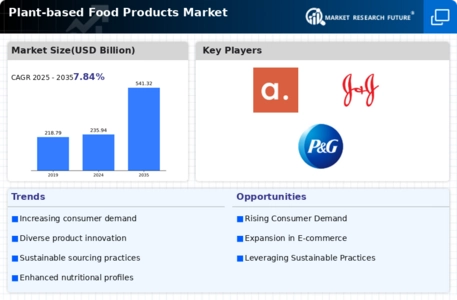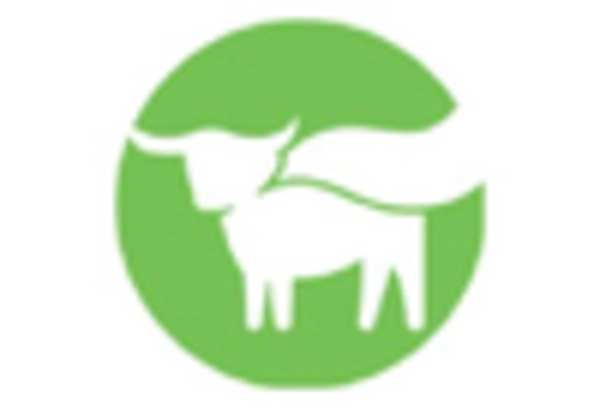Market Share
Asia Pacific Plant-based Food Products Market Share Analysis
In the bustling and rapidly growing Asia Pacific Plant-based Food Products market, companies employ a myriad of strategies to secure their portion of the market share. One prominent tactic is differentiation, where brands emphasize unique attributes or qualities of their plant-based products to stand out in the crowded marketplace. This could entail offering a diverse range of products, including plant-based meats, dairy alternatives, and plant-based snacks, to cater to the diverse culinary preferences of consumers across the region. By positioning themselves as providers of innovative and delicious plant-based options, companies aim to capture the attention of health-conscious consumers and those seeking environmentally sustainable alternatives to traditional animal products.
Pricing strategies also play a crucial role in market share positioning within the Asia Pacific Plant-based Food Products market. Some brands opt for premium pricing, positioning their products as high-quality, gourmet offerings targeted at affluent consumers willing to pay a premium for health and sustainability. Conversely, there are brands that adopt a more affordable pricing strategy, aiming to capture a larger market share by offering competitively priced plant-based alternatives that appeal to budget-conscious consumers. Price promotions, discounts, and bundle deals are common tactics used to attract consumers and gain a competitive edge in the market.
Furthermore, distribution channels are integral to market share positioning in the Asia Pacific Plant-based Food Products market. Companies strategically leverage various distribution channels such as supermarkets, health food stores, convenience stores, and online platforms to reach their target audience. By ensuring widespread availability and accessibility of their products, brands can effectively penetrate different market segments and increase their market share. Partnerships with distributors, retailers, and foodservice providers can also help brands secure prominent shelf space and visibility, further enhancing their competitive position in the market.
Brand image and marketing efforts are also significant factors influencing market share positioning in the Asia Pacific Plant-based Food Products market. Building a strong brand identity centered around health, sustainability, and culinary innovation can resonate with consumers and differentiate a brand from its competitors. Effective marketing strategies, including social media campaigns, influencer partnerships, and experiential events, can help raise brand awareness and foster consumer engagement. By consistently communicating the benefits of plant-based eating and the deliciousness of their products, companies can strengthen their position in the market and attract a loyal customer base.
Innovation plays a vital role in maintaining a competitive edge and capturing market share in the Asia Pacific Plant-based Food Products market. Companies invest in research and development to introduce new product formulations, flavors, and packaging innovations that cater to evolving consumer preferences and dietary trends. Whether it's developing plant-based alternatives to traditional Asian cuisines, introducing functional ingredients, or launching convenient ready-to-eat options, innovation allows brands to stay relevant and capture the attention of consumers in a diverse and dynamic market landscape.
Additionally, strategic partnerships and collaborations can provide brands with opportunities to expand their market share and reach new audiences. Teaming up with food manufacturers, retailers, or restaurant chains can help brands increase their visibility and accessibility to consumers. Collaborations with health and wellness organizations, environmental advocacy groups, or celebrity chefs can also help generate buzz and drive sales. By leveraging the strengths and resources of strategic partners, brands can enhance their market position and capitalize on growth opportunities in the competitive Asia Pacific Plant-based Food Products market.









Leave a Comment